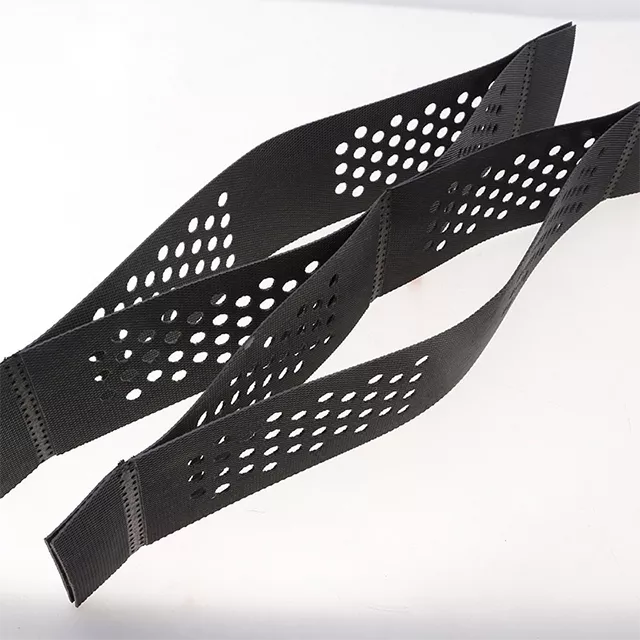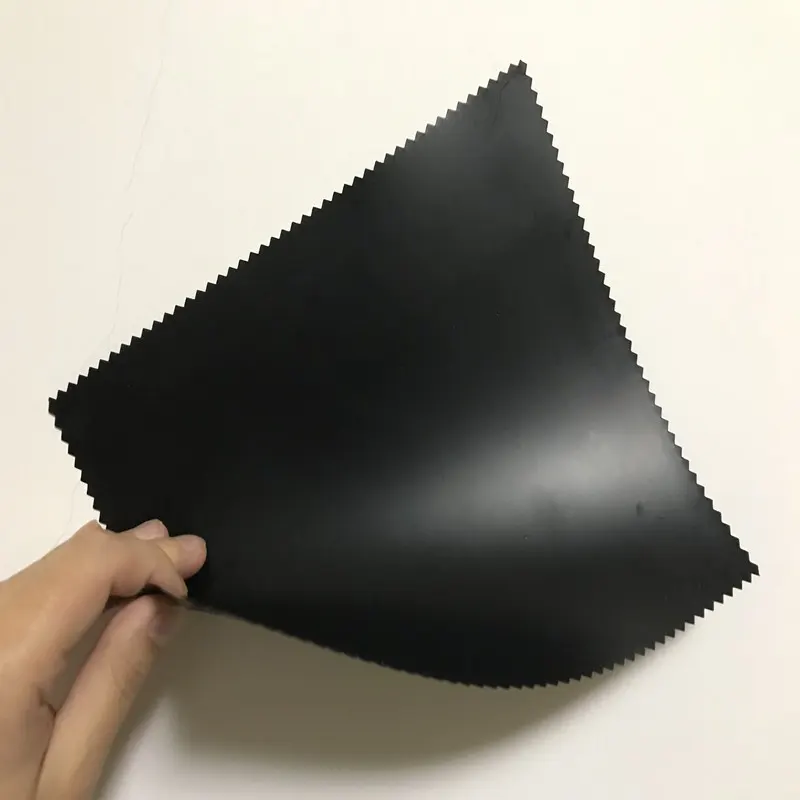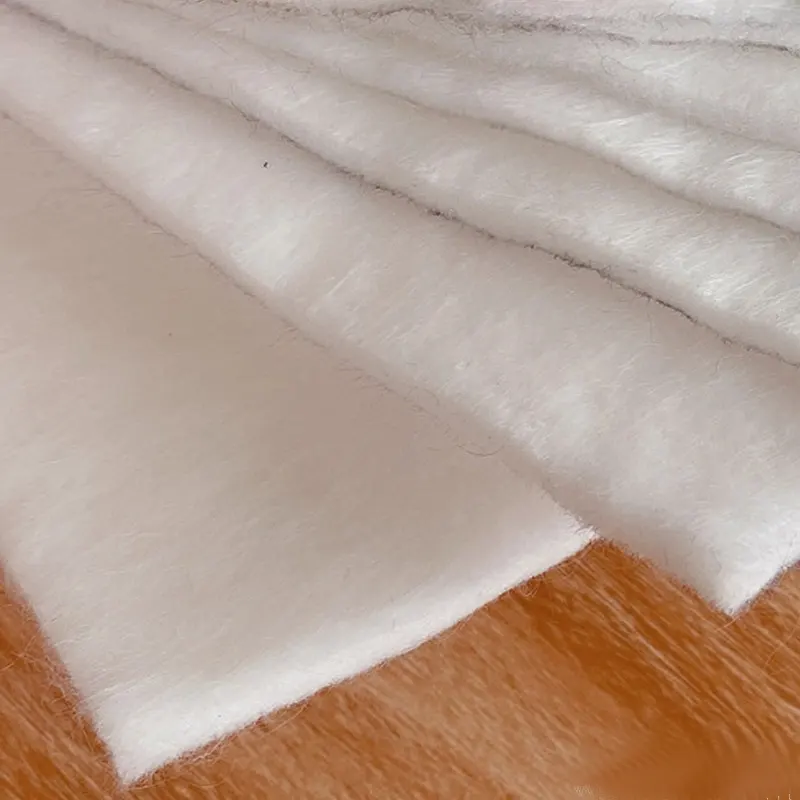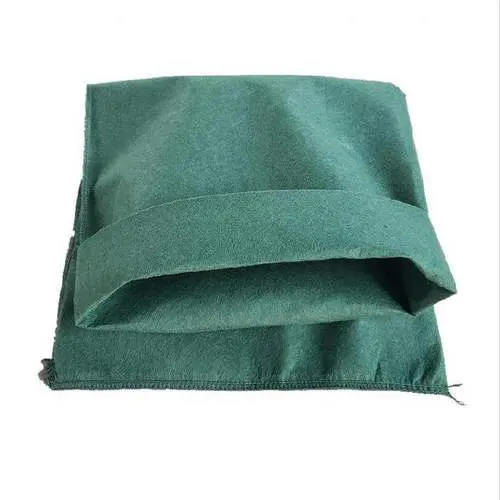Geomembrane And Ecological Restoration: A Dual Protection System for Polluted Site Management
After years of research and experience, we've found that "sustainable development" is currently the best solution for simultaneously advancing human civilization and protecting the global environment. Within this sustainable development approach, the remediation of contaminated sites is a key priority. This development philosophy requires not only remediation but also ecological restoration. This is what we'll discuss today: geomembrane for anti-seepage treatment combined with environmental restoration. This represents a highly advanced and effective "dual protection system" for contaminated site remediation. It cleverly combines the "rigid" safety of engineering barriers with the "flexible" self-healing of ecological purification, achieving the transition from short-term control to long-term sustainable remediation. I'll provide a detailed analysis of the composition, operating principles, advantages, and key application points of this dual protection system.
I. Reasons for Using Geomembranes for Remediation
1. Blocking Vertical Migration (Preventing Infiltration)
Preventing groundwater contamination: This is the most important reason. Hazardous substances (such as heavy metals and organic solvents) in contaminated sites can seep downward with rainwater and surface water, posing a serious threat to groundwater safety. The extremely low permeability of geomembranes (up to 10⁻¹² cm/s) effectively prevents pollutants from leaching downward, protecting groundwater resources.
2. Blocking Horizontal Diffusion (Controlling the Scope of Contamination)
Serving as a Vertical Barrier: Inserting a geomembrane vertically around a contaminated area (e.g., building an underground vertical barrier wall) can "enclose" the contaminated soil, preventing pollutants from spreading laterally with groundwater and contaminating surrounding clean soil and water bodies.
3. Blocking Upward Evaporation (Preventing Gas Evaporation)
Controlling Volatile Organic Compounds (VOCs): For sites containing volatile pollutants such as gasoline and benzene, these substances can escape from the soil into the air, causing air pollution and health risks. Incorporating a geomembrane as part of the cover system effectively blocks the escape pathways of these volatile gases.
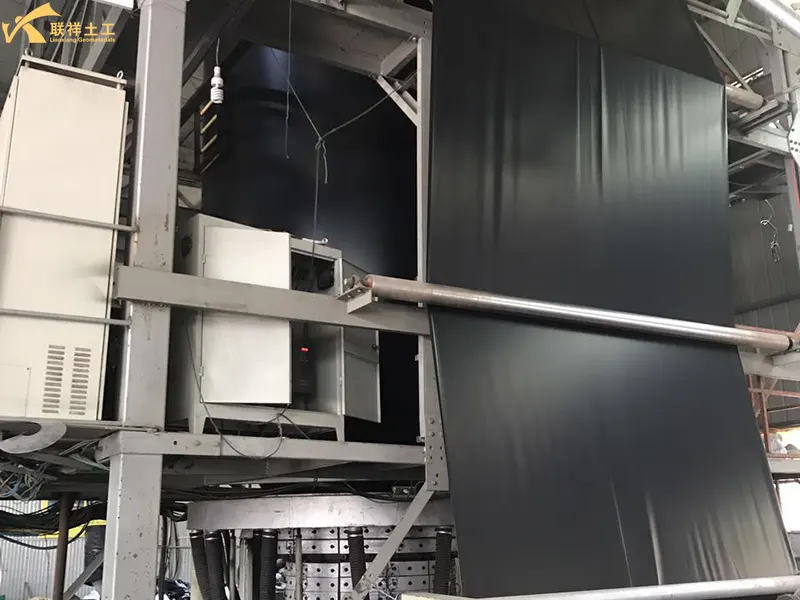
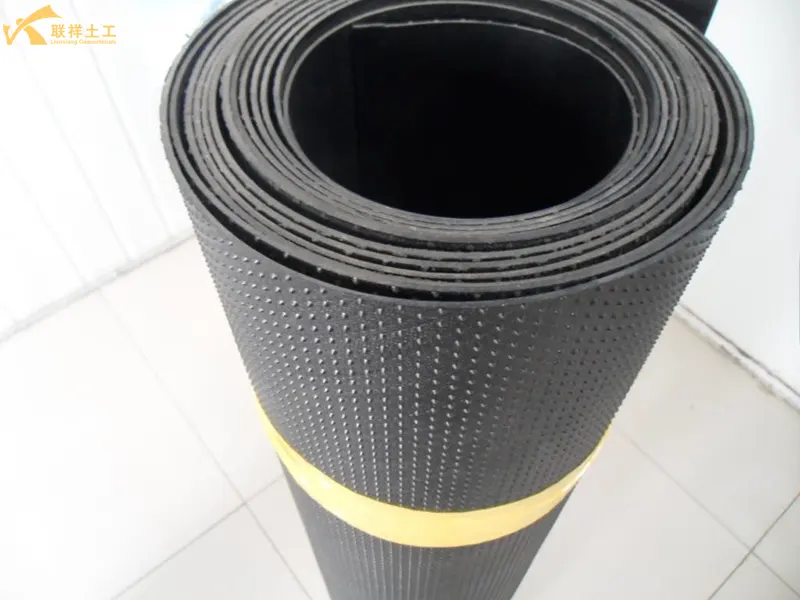
II. The Composition and Division of Labor of the Dual Protection System
First Level of Protection: Geomembrane—The "Isolation Wall" of Engineered Barriers
Geomembrane (typically high-density polyethylene (HDPE)) acts as a physical barrier in this system.
- Core Function: Isolation and Containment. It physically isolates contaminated soil (or water) from the external environment (such as clean groundwater and the atmosphere), preventing further migration of pollutants through leaching, seepage, and diffusion.
- Application Scenarios:
- As a base liner: Prevents pollutants from seeping downward and contaminating groundwater.
- As a top cover (often combined with clay or other soils to form a cover system): Prevents rainwater from infiltrating and carrying pollutants, while also blocking the escape of volatile pollutants into the atmosphere.
- Features: Rapid effectiveness, high reliability, and mature technology. It is the preferred engineering measure for controlling the scope of pollution and achieving rapid risk management.
Second Level of Protection: Ecological Restoration—The "Immune System" of Natural Purification
Ecological restoration technologies (such as phytoremediation and microbial remediation) play a role in biological purification within this system.
- Core Functions: Degradation, Absorption, and Stabilization. They utilize the metabolic activities of natural organisms, such as plants and microorganisms, to absorb, transform, degrade, or immobilize pollutants on the site, thereby gradually reducing their concentration and toxicity.
- Application Scenarios:
- Phytoremediation: Planting specific hyperaccumulators to absorb heavy metals; or utilizing the root systems of deep-rooted plants to promote the degradation of organic pollutants.
- Microbial remediation: Introducing or activating microbial communities capable of degrading target pollutants into the clean soil above the cover system, or under specific conditions.
- Features: Environmentally friendly, relatively low-cost, and sustainable. However, it is typically a slow, long-term process.
III. "Dual Protection" Synergistic Mechanism: 1+1 > 2
Combining the two is not simply a summation of benefits, but rather produces significant synergistic effects:
1. Geomembranes create a "safe operating zone" for ecological restoration:
Without the barrier of a geomembrane, pollutants would continue to spread, potentially preventing the establishment of an ecological restoration system, and even harming the restoration organisms themselves. Geomembranes ensure that the restoration plants and microorganisms operate in a relatively stable, controlled environment.
2. Ecological restoration mitigates the potential long-term risks of geomembranes:
All engineering materials have a design lifespan (e.g., HDPE membranes can last for decades). In the long term, there is a slight risk of aging and damage. As a "living" barrier, the ecological restoration system can continuously treat trace pollutants that may leak through minor defects, providing long-term "insurance" and enhancing the resilience and safety of the entire system.
3. Achieving a shift from "control" to "elimination":
Geomembrane technology alone only "controls" pollution, not "eliminates" it, and pollutants remain. When combined with ecological restoration, the system aims to gradually reduce or even ultimately eliminate pollutants, achieving true environmental restoration.
4. Enhanced landscape and ecological value:
Geomembrane-based sites are often unsightly. Ecological restoration (such as planting lawns, shrubs, or even trees) on the topsoil can restore green vegetation, improve the landscape, reestablish ecosystem services, and enhance land value.
IV. Summary of the Advantages of This Technology System
- Ultimate Risk Control: Combining the immediate nature of engineering measures with the long-term effectiveness of biological measures, this creates a multi-layered insurance policy.
- Optimized Cost-Effectiveness: Compared to relying solely on expensive end-of-pipe treatment technologies such as high-temperature incineration and chemical leaching, this combined solution achieves risk control objectives while offering superior lifecycle costs.
- Environmental Sustainability: This approach aligns with the concept of green and sustainable remediation, transforming wasteland into valuable land, achieving integrated environmental, social, and economic benefits.
- Adaptability: The type and thickness of the geomembrane, as well as the specific technical approach for ecological restoration, can be flexibly adjusted based on the type of pollutants (heavy metals, organic pollutants, etc.), concentration, and site conditions.
V. Application Keys and Precautions
To successfully implement this system, the following points must be noted:
- 1. Accurate Survey and Design: A detailed investigation of the site's hydrogeological conditions and the spatial distribution of pollutants is essential to ensure that the geomembrane system design (e.g., slope, anchor trenches) effectively collects and drains leachate and prevents water accumulation.
- 2. Material and Construction Quality: The quality of the geomembrane's raw materials and welding construction is paramount, and rigorous quality testing (such as electrical leak detection) is essential.
- 3. Plant and Microbial Screening: Selected remediation plants must be adapted to the local climate and have high remediation capabilities for the target pollutants. The selection of microbial agents also requires targeted attention.
- 4. Long-term Monitoring and Maintenance: A long-term monitoring system is necessary to regularly monitor groundwater, soil gas emissions, and the integrity of the cover system, while maintaining healthy vegetation growth.
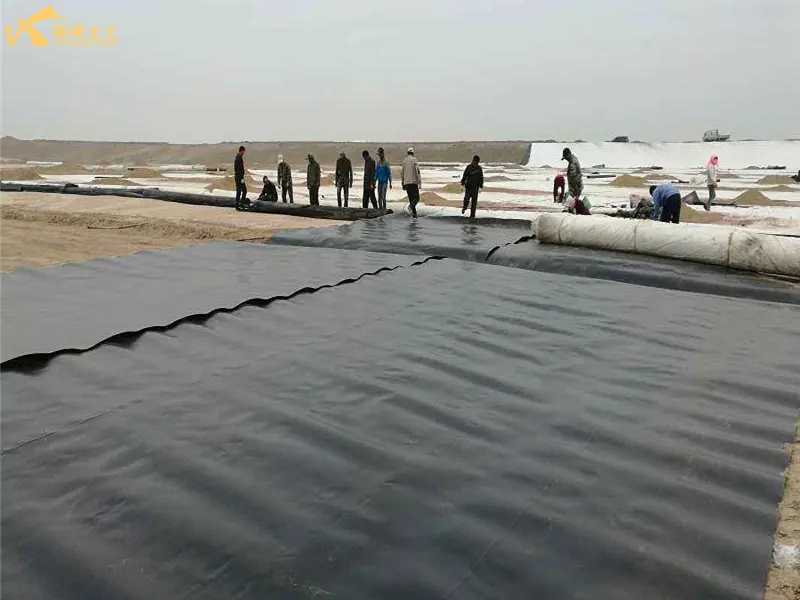
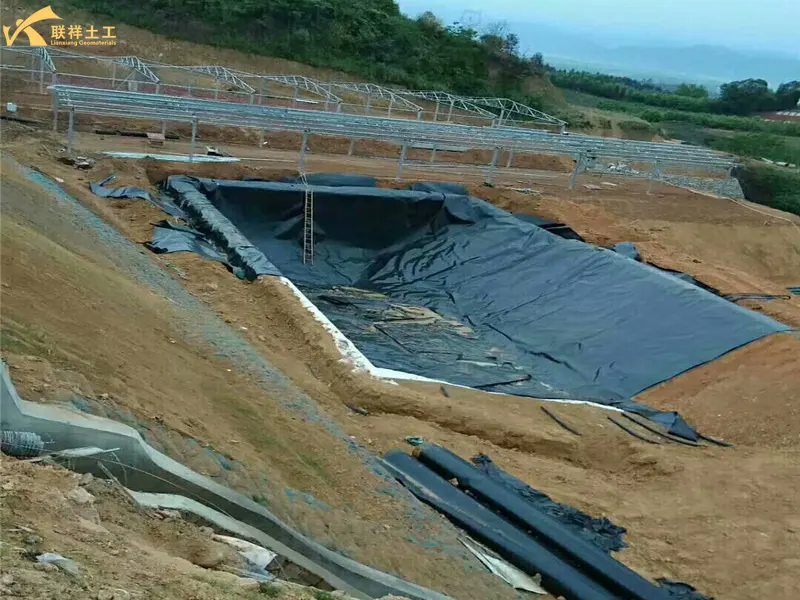
VI. Frequently Asked Questions and Answers
Question 1: Will geomembranes break? What is the biggest risk?
Answer: Yes. Geomembranes inherently have high tensile strength but are very thin (typically 1.0-2.0 mm) and are very sensitive to sharp objects. The biggest risk is not stretching caused by uniform settlement, but rather "localized puncture."
Main Risk Sources:
- 1. Improper Subgrade Preparation: The underlying clay subgrade or geotextile cover contains sharp rocks, tree roots, etc., which can puncture the membrane under the weight of the covering soil.
- 2. Construction Process: Construction workers carrying hard objects on their shoes, direct crushing by machinery, burns from welding tools, and improper operation during anchor trench installation.
- 3. Waste: Although the waste is compacted before landfill, it may still contain sharp objects.
Countermeasures:
- Strict foundation preparation: Ensure the base layer is flat and free of sharp objects.
- Use high-quality protective layers: Use high-weight geotextiles above and below the geomembrane as protective layers, which provide a crucial cushioning effect.
- Strict construction standards: Construction workers wear soft-soled shoes, temporary padding is used in equipment walkways, and rigorous inspections are conducted before and after welding.
Question 2: How can the quality of geomembrane welds be ensured? What if there are leaks?
Answer: Weld quality is the lifeline of the geomembrane anti-seepage system. A mature quality control system is currently in place.
Quality Control Methods:
- 1. Double-seam technique: Two parallel welds are formed during welding, leaving a cavity in the middle.
- 2. Air Pressure Testing: Air is injected into the cavity and the pressure changes are monitored. If the pressure is stable, the weld is intact.
- 3. Sampling Testing: A section of each weld of a certain length is cut and subjected to shear and peel testing to ensure that the weld strength is greater than that of the parent material.
- 4. Electrical Leak Detection: After the liner system is installed, a high-tech method is used to accurately "scan" and locate any tiny leaks across the entire membrane surface (including the weld and parent material).
If a leak is found, it must be repaired. Once a leak is found, it is repaired with a larger HDPE membrane block of the same material, larger than the leak area, and retested until it passes inspection.
Question 3: Does geomembrane age? What is its service life?
Answer: It will age, but with careful design and maintenance, its service life can be very long.
Aging Factors:
- Ultraviolet radiation: Exposure to sunlight can cause rapid aging. Therefore, because it is covered, the liner at the bottom of the landfill has a much longer lifespan than an exposed temporary cover.
- Chemicals: Landfill leachate has a complex composition, containing various acids, bases, and organic solvents. High-quality HDPE geomembranes have excellent chemical stability and are resistant to most leachates.
- Temperature Stress: Thermal expansion and contraction can cause stress concentrations.
Service Life:
- A covered HDPE geomembrane, protected from light and in a normal chemical environment, has a design lifespan of hundreds of years or even longer (based on laboratory accelerated aging tests).
- Temporarily exposed geomembranes require the addition of an anti-aging agent such as carbon black and should be covered as soon as possible.
Question 4: What impact does landfill sedimentation have on geomembranes?
Answer: The degradation and compaction of organic components in landfill can lead to uneven sedimentation, which severely tests the geomembrane system.
Main Impacts:
- 1. On the bottom liner system: Excessive stretching, deformation, and even tearing of the liner system may occur. The solution is to design a liner system with sufficient strength and allow for a certain degree of settlement margin.
- 2. Final cover system: This is a more common problem. Settlement can cause cracks and depressions in the cover layer (including the geomembrane, drainage layer, and vegetation layer), compromising its integrity.
Countermeasures:
- Phase-based construction: Final cover should be carried out after the waste mass has stabilized.
- Use flexible materials: Select a geomembrane with good ductility.
- Design compensation measures: Consider post-settlement remediation plans in the design.
Question 5: Will the leachate collection system become clogged? What should be done if it becomes clogged?
Answer: Yes. This is a global problem, not a problem with the geomembrane itself, but with the entire system.
Causes of clogging:
- Chemical clogging: Calcium and magnesium ions in the leachate form precipitates (scale) such as calcium carbonate and magnesium hydroxide.
- Biological clogging: Microorganisms multiply in the pipes, forming a biofilm.
- Physical clogging: Sludge and impurity deposits.
Consequences:
- Drainage is poor, and the leachate level rises (i.e., increases the "water head"), significantly increasing the risk of leakage through weak points in the liner system.
Prevention and Mitigation:
- Design Optimization: Establish adequate slopes and use large-size drainage gravel.
- Regular Monitoring and Maintenance: Install water level monitoring wells to monitor the water head above the liner in real time. Clear the liner using methods such as high-pressure water jet flushing and chemical cleaning. In severe cases, drilling a vertical shaft for drainage may be necessary.
Conclusion
The dual protection system of "geomembrane + ecological restoration" represents a modern environmental governance philosophy, evolving from passive containment to active purification, from gray infrastructure to green solutions. It is not only a technical combination but also an upgraded governance philosophy, providing a scientific, economical, and sustainable remediation path for numerous medium- and low-concentration, large-scale contaminated sites (such as historical industrial sites, tailings ponds, and informal landfills).
Written by
SHANDONG LIANXIANG ENGINEERING MATERIALS CO., LTD.
Editor Fan
WhatsApp:+86 139 5480 7766
Email:admin@lianxiangcn.com
Contact
-
WhatsApp
-
E-MailE-Mail:admin@lianxiangcn.com
-
WeChatWeChat:18554180188


